kottke.org posts about Kara Walker

When I quit my magazine job, I decided to try my hand as an artist. … I got frustrated easily and gave up easily, never knowing when to persevere or surrender. …
My curiosity is earthbound: Where do [artists] begin, and what do they do next, and when do they know they are finished? And more crucially: What do they do when they lose faith? Do they lose faith?
In an adaptation from his new book, The Work of Art: How Something Comes From Nothing, former New York magazine editor Adam Moss shares his interviews with Kara Walker, Louise Glück, and Cheryl Pope, about their respective creative processes [Vulture]. My favorite part is the intro, though, where he talks about his own process (“that was the beginning of my torment”).
I’m hoping the answer to the “persevere or surrender” question is in there very explicitly, by the way!
The NY Times convened a group of curators and artists to decide on a list of the 25 artworks made since 1970 “that define the contemporary age”. At various times, the panelists objected to the futility of such an exercise, but eventually ended up with a list that’s highly subjective, grossly incomplete, and full of great work.
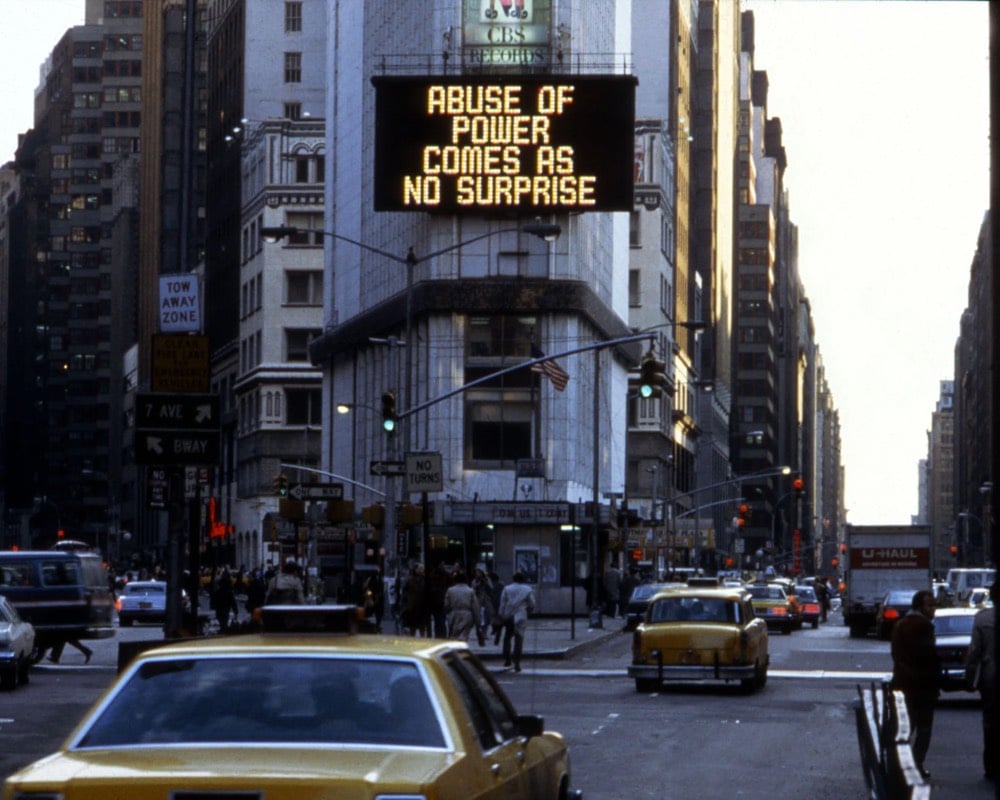
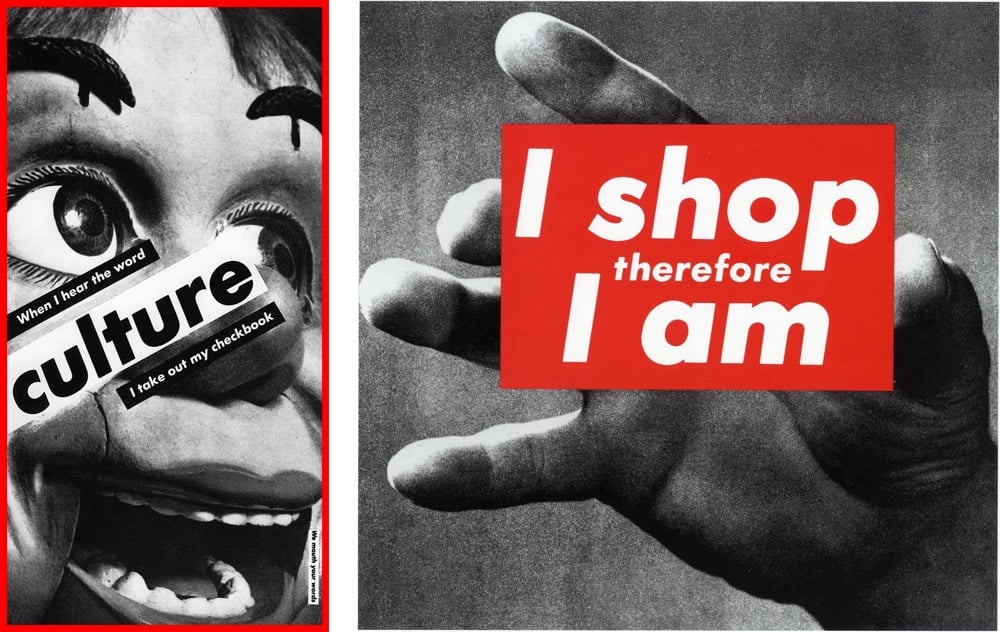
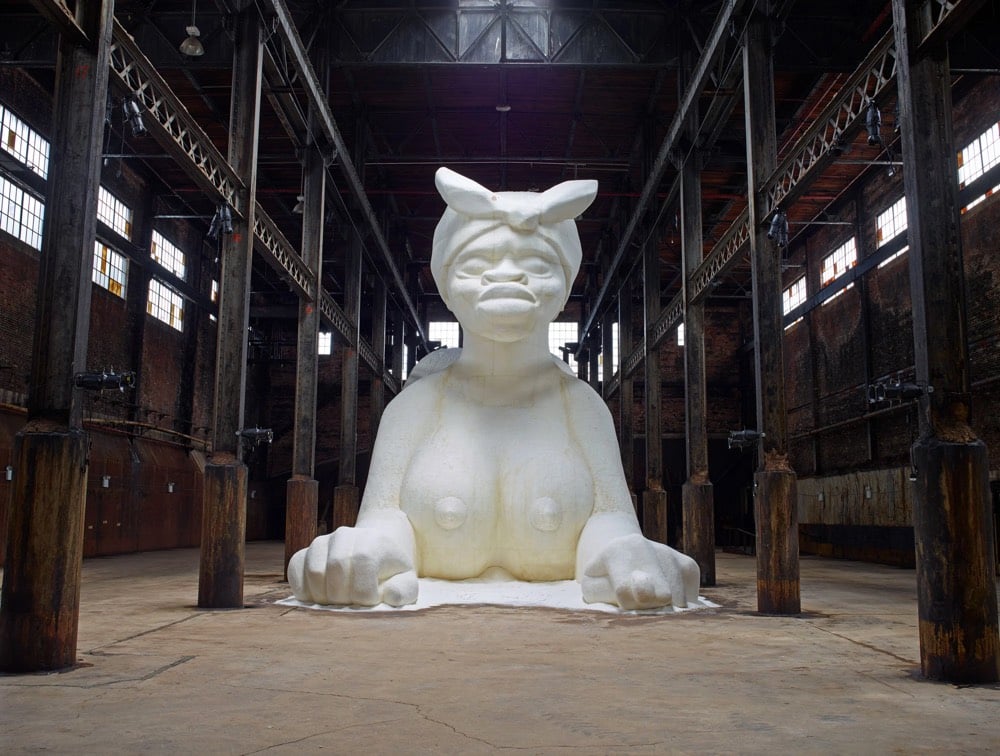
Nan Goldin, Barbara Kruger, Jenny Holzer, and Kara Walker all made the list. Jeff Koons is listed, somewhat reluctantly both by the panel and himself: “The artist did not grant permission for the named work to be published.”
Perhaps just as interesting as the artworks is the panelists’ discussion, a mini-tour of recent art history. Artist Martha Rosler said of Walker’s “A Subtlety, or the Marvelous Sugar Baby”:
“A Subtlety” made lots of people furious because it was about the history of labor and sugar in a place that was already about to be gentrified. It was this gigantic, mammy-like, sphinxlike, female object, and then it had all these little melting children. “A Subtlety” is part of a very longstanding tradition that began in the Arab world that had to do with creating objects out of clay but also out of sugar. So it’s the impacted value of extractive mining, but it’s also the impacted value of the labor of slaves. And it’s also on the site where wage slavery had occurred — sugar work was the worst. The Domino Sugar factory was once owned by the Havemeyers, and Henry Havemeyer was one of the main donors to the Metropolitan Museum of Art. The sugar king was the art king. So it had all of these things — and then there’s the idea of all these people taking selfies in front of it. It was extremely brilliant without having to say a thing.
(via @sippey)
The NY times recently asked eight artists what art projects they would do if they could fly to the Moon. Here’s Kara Walker’s answer:
Gil Scott Heron wrote that famous poem, “Whitey on the Moon”: “The man just upped my rent last night / Cause whitey’s on the moon / No hot water, no toilets, no lights / But whitey’s on the moon.”
I got thinking about a moon colony, which plenty of people have talked about pretty seriously over the years. So what I’d do is this: For every female child born on Earth, one sexist, white supremacist adult male would be shipped to the moon. They could colonize it to their heart’s content, and look down from a distance of a quarter-million miles. It’s a monochrome world up there; probably they’d love it. The colony would be hermetically sealed. And the rest of us could enjoy the sight of them from a safe distance. Maybe there could be some kind of selection ritual involved, something to do with menstruation and the tides — a touch of nature, to add a bit of irony justice to the endeavor.
For the supremacists, maybe traveling so far from home would help inspire a different worldview. And for the rest of us down on Earth, perhaps this is an opportunity to focus on the nature of our home planet with the same dreamy reverence we once reserved for the moon.
Here’s Scott-Heron’s Whitey on the Moon. In contrast, architect Daniel Libeskind would turn the Moon into a square by painting part of it black:
My son Noam is an astrophysicist at the Leibniz Institute in Germany, and we did some calculations about how it could work. We thought the best way would be to paint sections of it black, so they no longer reflect the sun’s light. To account for the curvature, you’d need to paint four spherical caps on the moon’s surface. That would create a kind of frame that looks square when you see it from earth.
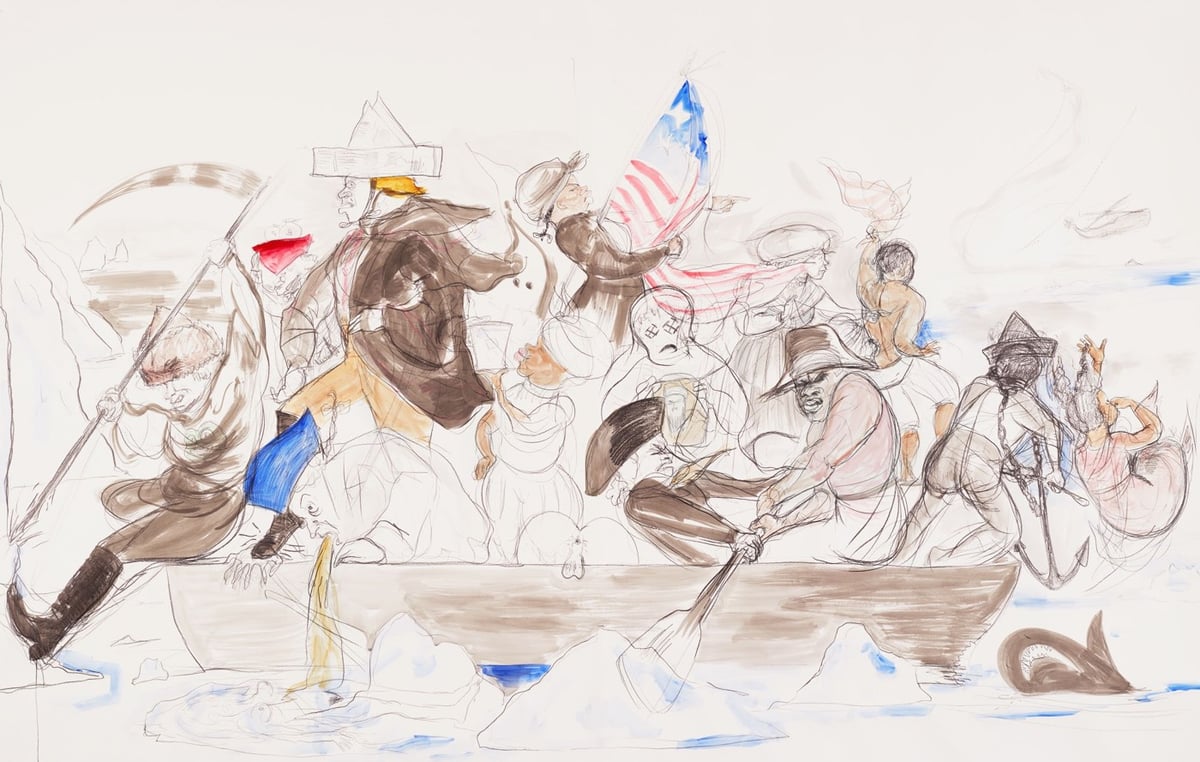
Not wanting to listen to the news on inauguration day, artist Kara Walker painted. The result is a Trumpian take on Emanuel Leutze’s famous work “Washington Crossing the Delaware”, a copy of which is on display at the Met Museum. I hope I get to see Walker’s version in a museum or gallery someday soon.
On the walk back from soccer practice the other day, my sharp-eyed seven-year-old son spotted something through the partially papered-up window of a Chelsea gallery. “Hey, Kara Walker!” he says.1 And sure enough:
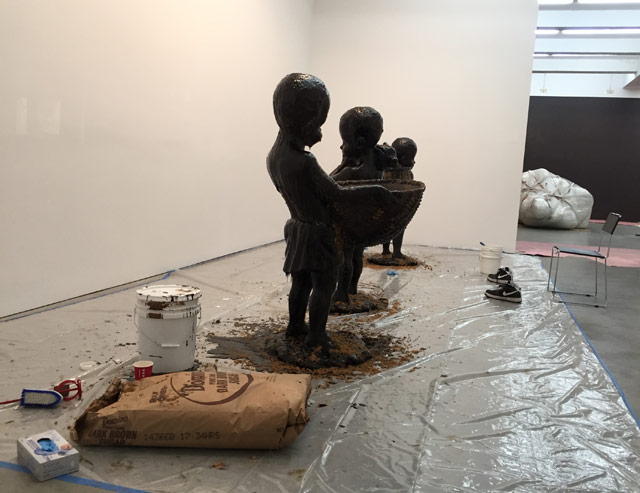
The gallery is Sikkema Jenkins on 22nd St and Walker’s show, Afterword, starts there tomorrow and runs through mid-January. The show is an extension of A Subtlety, Walker’s installation at the Domino Sugar Factory in Williamsburg over the summer. Several of the sugar statues and the left fist of the sugar sphinx from the Domino installation will be shown along with new video works and notes & sketches from the planning of A Subtlety. You can see some of the figures in the photo above (fashioned out of Domino Sugar, naturally) and I think that’s probably the fist in the background on the right, wrapped in plastic.











Stay Connected